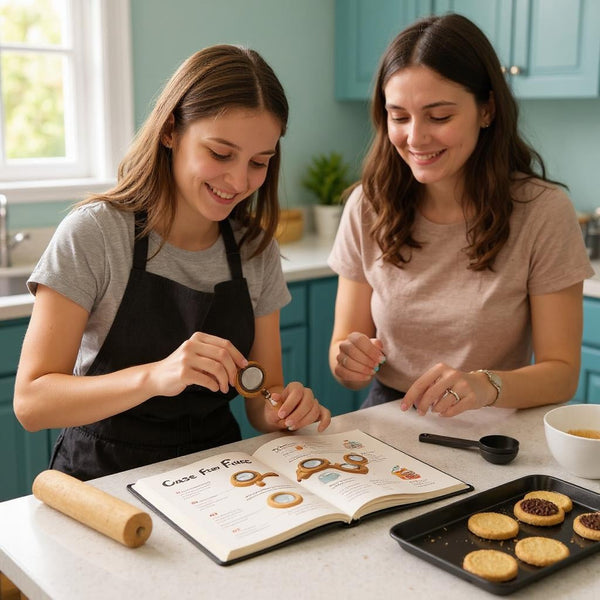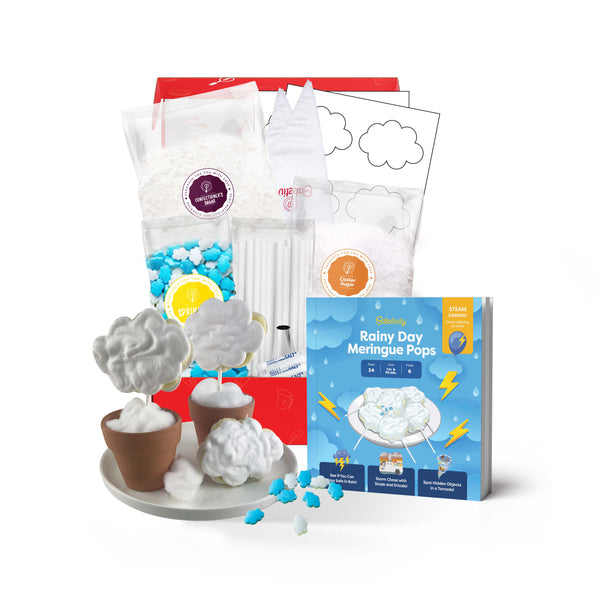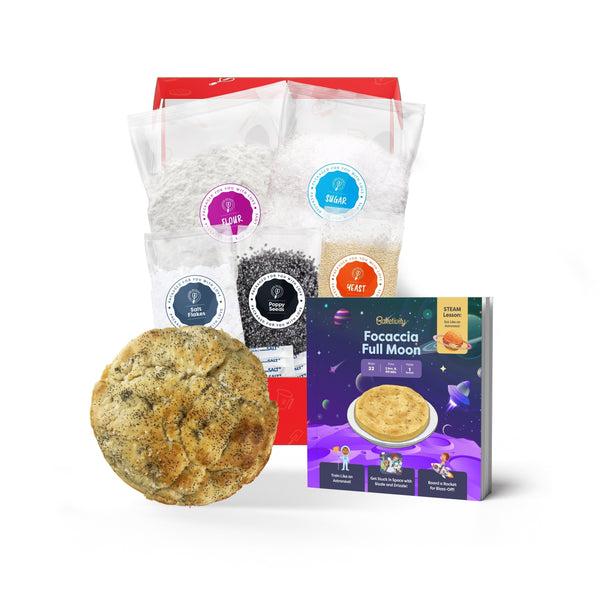When it comes to creating delicious and nutritious meals, one of the most vital aspects is the quality of the ingredients you use. Whether you're a seasoned chef or just starting out in the kitchen, understanding the role that ingredients play in cooking can elevate your culinary creations to new heights. In this article, we will delve into the importance of quality ingredients, the difference between quality and low-quality options, the benefits of investing in quality ingredients, sourcing tips, and proper storage techniques. By the end, you'll have a clear understanding of why quality ingredients are essential and how to incorporate them into your cooking.
Understanding the Role of Ingredients in Cooking
Have you ever wondered why a dish tastes so amazing at a restaurant or when prepared by a professional chef? The secret lies in the ingredients. Quality ingredients are the building blocks of any successful dish. They not only enhance the flavor of your food but also contribute to its nutritional value.
The Impact of Ingredients on Taste
The first and most apparent impact that ingredients have on cooking is taste. Quality ingredients possess robust flavors and aromas that can transform a bland dish into a culinary masterpiece. By using fresh herbs, spices, and high-quality produce, you can infuse your dishes with vibrant and complex flavors.
How Ingredients Affect Nutritional Value
Ingredients also have a significant impact on the
nutritional value of your meals. Fresh, high-quality ingredients are packed with essential nutrients, vitamins, and minerals that contribute to a well-balanced and healthy diet. By choosing quality ingredients, you're not only enhancing the taste of your food but also nourishing your body.
The Importance of Sourcing Ingredients
Where you source your ingredients can also play a crucial role in the overall quality of your dishes. Opting for locally sourced ingredients can not only
support small businesses and farmers in your community but also ensure that you are using the freshest produce available. Farmers' markets and specialty grocers are great places to find unique and high-quality ingredients that can take your cooking to the next level.
Experimenting with Different Ingredients
Don't be afraid to step out of your comfort zone and
experiment with new and exotic ingredients in your cooking. Ingredients like truffle oil, saffron, or miso paste can add a depth of flavor and complexity to your dishes that you never thought possible. Embrace the world of ingredients and let your creativity run wild in the kitchen!
The Difference Between Quality and Low-Quality Ingredients
Now that we understand the importance of using quality ingredients, let's explore the difference between quality and low-quality options.
Identifying Quality Ingredients
Quality ingredients are typically fresh, unprocessed, and sourced from reliable suppliers. When shopping for produce, look for vibrant colors, firm textures, and a lack of blemishes. Organic options are often a good indicator of quality, as they are grown without synthetic pesticides or fertilizers, resulting in a more natural and flavorful product. For meats and dairy, choosing products labeled as grass-fed or pasture-raised can ensure higher nutritional value and better taste due to the animals' natural diet. Understanding the journey of your ingredients, from farm to table, can give you a deeper appreciation for the quality of what you're using in your cooking.
When it comes to grains and flours, opting for whole grains over refined ones can provide more nutrients and a richer taste profile. Whole grains retain the bran and germ, where most of the nutrients are found, unlike refined grains that strip these components during processing. Incorporating whole grain options like quinoa, brown rice, or whole wheat flour can elevate the nutritional value of your dishes while adding a nutty and wholesome flavor.
The Effects of Low-Quality Ingredients on Your Dish
Using low-quality ingredients can have detrimental effects on your dishes. They may lack flavor, have an unappealing texture, or even compromise the
safety of your meals. For example, using stale spices or low-quality oils can result in a dish that falls short of your expectations. Freshness is key when it comes to ingredients like herbs and spices, as they can lose their potency and aroma over time, impacting the overall taste of your dish. Opting for high-quality oils, such as extra virgin olive oil or cold-pressed coconut oil, can not only enhance the flavor of your food but also provide health benefits due to their natural extraction process.
Investing in Quality Ingredients: Is It Worth It?
Now that we understand the significance of quality ingredients, you may wonder if investing in them is worth it. Let's explore the considerations.
Cost vs. Value in Cooking
While quality ingredients may come with a slightly higher price tag, the value they bring to your dishes is undeniable. The enhanced flavors, improved texture, and heightened nutritional value justify the investment. Additionally, by using quality ingredients, you're more likely to create restaurant-quality meals in your own kitchen, saving money on dining out.
Long-Term Benefits of Using Quality Ingredients
Using quality ingredients also has long-term benefits for your health and well-being. Nutrient-rich, high-quality foods nourish your body and support overall wellness. This can lead to increased energy levels, improved digestion, and even a reduced risk of certain diseases. Investing in your health through quality ingredients is a choice that pays off both in the present and the future.
Environmental Impact of Quality Ingredients
Another aspect to consider when investing in quality ingredients is the environmental impact. By choosing organic, locally sourced, or sustainably produced ingredients, you are supporting practices that are better for the planet. This includes reducing carbon emissions from transportation, promoting biodiversity, and minimizing the use of harmful chemicals in food production. Your decision to prioritize quality ingredients can contribute to a more sustainable food system for future generations.
Cultural and Social Significance
Quality ingredients often have cultural and social significance as well. They can connect you to traditions and heritage, offering a deeper appreciation for the origins of different foods. By seeking out quality ingredients from diverse sources, you not only enrich your culinary experiences but also support small-scale producers and local communities. This conscious choice fosters a sense of connection and respect for the people behind the ingredients that grace your table.
Sourcing Quality Ingredients
Now that you're convinced of the importance of quality ingredients, let's explore some tips for sourcing the best options for your kitchen.
Tips for Buying Quality Produce
When shopping for fresh produce, consider visiting local farmers' markets or organic markets. These sources often provide a wide selection of high-quality fruits, vegetables, and herbs. Choosing seasonal produce can also ensure optimal flavor and freshness.
Finding Quality Meats and Dairy
When it comes to meats and dairy products, look for reputable suppliers that prioritize animal welfare and sustainable farming practices. Opt for organic, grass-fed meats and pasture-raised eggs. For dairy, consider choosing options that are hormone-free and minimally processed. These choices not only guarantee higher quality but also contribute to a more ethical and environmentally friendly food system.
Storing and Preserving Quality Ingredients
Once you've sourced your quality ingredients, it's essential to know how to store and preserve them properly to maintain their freshness and flavor.
Proper Storage Techniques for Fresh Ingredients
For fruits and vegetables, understanding their specific storage requirements is key. Some produce, like tomatoes, should be stored at room temperature, while others, like lettuce, benefit from refrigeration. Knowing the optimal conditions for each ingredient will help you prolong their shelf life and retain their quality.
Preserving the Quality of Your Ingredients Over Time
Preserving the quality of your ingredients for future use can also be done through various techniques. Freezing, canning, and drying are effective methods for extending the lifespan of products like herbs, fruits, and meats. By using proper preservation techniques, you can enjoy the benefits of high-quality ingredients even when they're out of season.
In conclusion, when it comes to cooking, the importance of quality ingredients cannot be overstated. They are the foundation of flavor, nutrition, and overall satisfaction in your meals. By understanding the role of ingredients, distinguishing quality from low-quality options, investing in quality, sourcing responsibly, and storing ingredients properly, you can take your culinary skills to new heights and create memorable dishes that nourish both body and soul.
Start Your Family Baking Adventure with Baketivity!
Ready to turn your kitchen into a fun and educational bakery? Join the Baketivity Baking Club and embark on a delightful journey of family bonding, creativity, and learning. Our baking kits, infused with quality ingredients and the joy of discovery, are designed to provide you with everything you need to create lasting memories. Embrace the art of baking and nurture your child's culinary talents today.
Join the Baking Club and let's bake up some fun!




